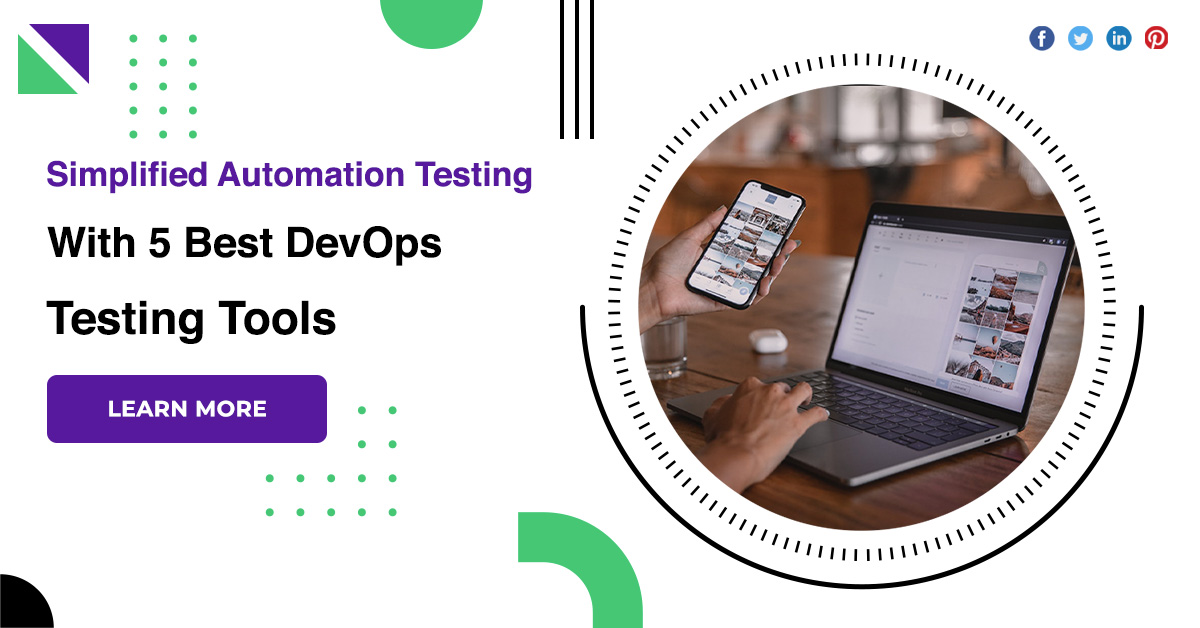Consumers are getting everything tapping into our smartphones, from groceries to clothes wear, with convenience at their fingertips. One such fast accessibility service is a ride-hailing app that helps users access transportation by comparing routes and prices. Entrepreneurs are eagerly investing in the idea of on-demand ride services due to the rising demand and navigating under a competitive market.
Globally, the ride-hailing market is dominated by key players like Uber, Lyft, Ola, and Grab. According to the Statistica research report, the estimated revenue of the market will reach $175.70 billion by 2025. With a projected annual growth rate CAGR of 4.91%, it estimates a volume of $212.80 billion, and the user penetration rate will reach 28.6% by 2029.
Are you planning to develop a taxi app with unique features and functionalities that meet user expectations? Here is the comprehensive guide blog to throw light on key aspects of taxi app development cost, features, technology stack, and complexities. If you are planning to build your own taxi application, The NineHertz is the leading Taxi booking app development company.
Factors That Affect Taxi Booking App Development Cost

Taxi booking apps have multiple integrated features, such as payment integration, app updates, GPS integration, supporting systems, and designing apps. So, considering cost to develop a taxi booking app, multiple factors affect the development of the application:
1. App Design
While designing a taxi app, developers try various UI/UX designs to set it between basic and custom design. It can bring on cost variation to create a basic app design that employs a ready-to-use template that is cheaper and easily accessible. However, custom designs built with unique user interfaces and integrated features have become more time-consuming and expensive.
2. Feature Set
Developing a taxi booking app means juggling multiple features to optimize the best versions. Some of the basic features include user signup, location identification, payment gateway, ride-hailing, and driver accounts that involve less investment. On the other side, advanced features, such as real-time map tracking, in-app messages, rating tiers, incentives, and data analysis, can add complexities but amount to the high cost to build a taxi app.
3. Technology Stack
The next factor affecting the development cost is what kind of technology stack you are using to design applications. Some key front-end technologies, such as Flutter or ReactNative, demonstrate how users interact with an app; on the other hand, backend technologies like Python or Node.js are used for data storage and processing. So, choosing a more complex tech stack will result in higher development costs.
4. Platform Choices
Another key factor that affects the cost to develop a taxi booking app is the choice of platforms like Android, iOS, or both. So, building a single application that can work for multiple platforms can cost less than having individual apps for each one. It requires more cost investment for testing and code bases.
5. Timeframe & Urgency
The timeline also becomes a dependent factor in developing the tax booking app’s features and design. To develop a basic app, it will take around 3 to 6 months to deploy the application with minimal cost, while enhancing the featured app can take around 6 to 12 months and account for the high taxi booking app development cost.
6. Updates & Compliances
Some post-launch costs might involve multiple aspects like bug fixes, server maintenance, and feature updates, while adhering to compliance might create extra costs for development and testing efforts. Further, adding more advanced security protocols for data protection and secure payments can increase development time and costs.
Cost to Develop a Taxi App like Uber

Uber as a ride-hailing app comes with a lot of integrated features, such as real-time tracking, driver matching, fare calculation, ride history, and safety features. If you are wondering how much taxi booking app development cost incur to create the same model as Uber, here is the comparison table:
| Feature/Module | Cost per Hour ($) | Estimated Hours | Total Cost ($) |
|---|---|---|---|
| User App Development | |||
| User Registration/Login | 25-75 | 40-60 | 1,000-4,500 |
| Ride Booking | 25-75 | 80-100 | 2,000-7,500 |
| Notifications (Push, SMS) | 25-75 | 40-60 | 1,000-4,500 |
| Review & Rating System | 25-75 | 30-50 | 750-3,750 |
| Real-time GPS Tracking | 25-75 | 100-120 | 2,500-9,000 |
| Payment Integration | 25-75 | 60-80 | 1,500-6,000 |
| Driver App Development | |||
| Driver Registration/Login | 25-75 | 40-60 | 1,000-4,500 |
| Ride Management | 25-75 | 70-90 | 1,750-6,750 |
| GPS Navigation | 25-75 | 80-100 | 2,000-7,500 |
| Earnings & Analytics | 25-75 | 50-70 | 1,250-5,250 |
| Admin Panel | |||
| Dashboard & Analytics | 25-75 | 100-120 | 2,500-9,000 |
| User & Driver Management | 25-75 | 80-100 | 2,000-7,500 |
| Ride Management | 25-75 | 60-80 | 1,500-6,000 |
| Payment Management | 25-75 | 50-70 | 1,250-5,250 |
| Total Development Time | 980-1,250 | $25,000-$93,750 | |
Cost to Build a Taxi Booking App like OLA

Ola is another leading ride-hailing app with a strong focus on the market, it offers a wide range of services, including auto-rickshaws, bike taxis, rental cars, and even electric scooters. Let’s find out how much it cost to develop a taxi booking app like OLA with the reference of a comparison table:
| Feature/Module | Cost per Hour ($) | Estimated Hours | Total Cost ($) |
|---|---|---|---|
| Customer App Development | |||
| User Registration/Login | 25-75 | 40-60 | 1,000-4,500 |
| Ride Booking | 25-75 | 80-100 | 2,000-7,500 |
| Ride History & Ratings | 25-75 | 40-60 | 1,000-4,500 |
| Customer Support | 25-75 | 30-50 | 750-3,750 |
| Real-time Tracking | 25-75 | 100-120 | 2,500-9,000 |
| Fare Estimation & Payment | 25-75 | 60-80 | 1,500-6,000 |
| Multi-payment Options | 25-75 | 50-70 | 1,250-5,250 |
| Promo Codes & Discounts | 25-75 | 40-50 | 1,000-3,750 |
| Driver App Development | |||
| Earnings Dashboard | 25-75 | 50-70 | 1,250-5,250 |
| Navigation & Tracking | 25-75 | 80-100 | 2,000-7,500 |
| Driver Registration | 25-75 | 50-70 | 1,250-5,250 |
| Ride Requests | 25-75 | 60-80 | 1,500-6,000 |
| Admin Panel | |||
| Ride Management | 25-75 | 60-80 | 1,500-6,000 |
| Payment & Commission Control | 25-75 | 70-90 | 1,750-6,750 |
| Dashboard & Reports | 25-75 | 120-150 | 3,000-11,250 |
| User & Driver Management | 25-75 | 80-100 | 2,000-7,500 |
| Other Costs | |||
| UI/UX Design | 25-75 | 100-150 | 2,500-11,250 |
| Quality Assurance & Testing | 20-50 | 150-200 | 3,000-10,000 |
| Project Management | 30-60 | 150-200 | 4,500-12,000 |
| Maintenance & Updates | Monthly | 2,000-10,000 | |
| Total Estimate | $50,000 – $160,000 | ||
Cost to Create a Taxi App like Careem

Careem is one of the leading apps that is getting popular across the Middle East and North Africa due to regional dominance and tech-driven feature integration. But how much does development cost to create an app like Careem? Here is an overall cost estimation:
| Feature/Module | Cost per Hour ($) | Estimated Hours | Total Cost ($) |
|---|---|---|---|
| Customer App Development | |||
| User Registration/Login | 25-75 | 40-60 | 1,000-4,500 |
| Ride Booking | 25-75 | 80-100 | 2,000-7,500 |
| Real-time GPS Tracking | 25-75 | 100-120 | 2,500-9,000 |
| Fare Estimation & Payment | 25-75 | 60-80 | 1,500-6,000 |
| Payment Options | 25-75 | 50-70 | 1,250-5,250 |
| Multi-language Support | 25-75 | 50-70 | 1,250-5,250 |
| Promo Codes & Discounts | 25-75 | 40-50 | 1,000-3,750 |
| Ride History & Ratings | 25-75 | 40-60 | 1,000-4,500 |
| Customer Support | 25-75 | 30-50 | 750-3,750 |
| Driver App Development | |||
| Navigation & Tracking | 25-75 | 80-100 | 2,000-7,500 |
| Earnings Dashboard | 25-75 | 50-70 | 1,250-5,250 |
| Driver Registration | 25-75 | 50-70 | 1,250-5,250 |
| Ride Requests | 25-75 | 60-80 | 1,500-6,000 |
| Admin Panel Development | |||
| Ride Management | 25-75 | 60-80 | 1,500-6,000 |
| Payment & Commission Control | 25-75 | 70-90 | 1,750-6,750 |
| Dashboard & Analytics | 25-75 | 120-150 | 3,000-11,250 |
| User & Driver Management | 25-75 | 80-100 | 2,000-7,500 |
| Other Development Costs | |||
| Project Management | 30-60 | 150-200 | 4,500-12,000 |
| UI/UX Design | 25-75 | 100-150 | 2,500-11,250 |
| Quality Assurance & Testing | 20-50 | 150-200 | 3,000-10,000 |
| Maintenance & Updates | Monthly | 2,000-10,000 | |
| Grand Total Estimate | $55,000 – $180,000 | ||
How Can You Reduce Taxi App Development Costs?
We got the estimated value of taxi booking app development cost, somewhat like Uber, Ola, and Careem, but how to reduce cost? If any company or entrepreneur aims to build an effective application with varied features, they require strategic planning to minimize cost while utilizing maximum resources.
Here are the different ways to reduce taxi app development costs:
1. Use Simple Admin Panel
To minimize the development cost, you can focus on limiting the features for the admin panel by setting only essential ones like payment tracking, driver and ride management, and passenger profiles.
2. Don’t Over-Customization
For better cost evaluation, you can prefer to stick to standard features only while avoiding expensive integration like custom design, navigation functionalities, and animations.
3. Prefer Cross-Platform Development
Considering multiple frameworks can add high value to the cost to build a taxi app. Frameworks like React Native or Flutter to create a codebase for both iOS and Android involve less development time and cost.
4. Minimal Viable Product (MVP)
You can focus on building an MVP app with only basic features, such as an admin panel, payment integration, Real-time GPS tracking, user registration, and ride booking for initial phases.
5. Use Cloud Service for Backend
Building your server infrastructure involves additional costs for design, function, or deployment. However, using cloud services of Firebase, Google Cloud or AWS can scale backend operations while creating less cost for development.
6. Optimize Testing
Using automated testing tools helps to reduce the cost burden of manual testing to leverage the use of testing platforms for multiple devices without investing in physical devices.
7. API Integration
Third-party integration helps reduce time and improve user experiences by adding features such as notification alerts, payment gateways like Razorpay, PayPal, or Stripe, and map navigation like Google Maps. However, it can increase development costs.
8. Outsource
Hiring developers from low-cost regions will cost less to develop a taxi app. Also, depending on the complexity, you can choose freelancing and small projects to offer end-to-end solutions with lower costs following the project basis.
(North America – $100 to $250 per hour, Western Europe – $50 – $150 per hour, Eastern Europe – $30 -$75 per hour, and India or South Asia – $15 – $50 per hour)
10 Key Features to Create a Taxi Application
Building an app is a comprehensive process of planning, design, testing, and deployment. But, what’s most entrepreneurs stuck in between finding the right choices of features to expand the user base for their taxi booking app? Here is the list of top features:
1. User Signup
First-time users tap into your taxi app through signup pages that include basic details to convey information, such as the customer’s name, email ID, phone number, and phone number. A hassle-free signup helps users quickly register and complete the process. This feature of the taxi app simply integrates account creation, data collection, and account verification details that ensure ease of use.
2. Pickup & Drop Location
The pickup and drop location feature will decide where passengers want to head and optimize the route and cost accordingly. It is backed by GPS map tracking to find the best nearby route and locate it as an in-built app feature for both driver and passengers. The user can manually enter the address details or automatically detect them using location for easy selection.
3. Confirm or Cancel Ride
Users might commit a mistake in picking the destination or booking the wrong ride. To overcome such customer problems, users can select the confirm or cancel button after considering all required details. Depending on your choices, you can add free cancellation, a small fee for canceling, and no-show fees to your app.
4. Automated GPS Tracking
This feature helps to pinpoint the exact location of the customer so the allotted driver can understand where you have to pick up your customers. It facilitates hassle-free cab booking and is beneficial for customers who are visiting any new city for the first time.
5. Hassle-Free Payment
Flexible payment options can improve user experience with diverse payment methods like credit or debit cards or UPI. It can help you add features such as automated invoices, pay details, gross amount, taxes, discount applied, and net payment amount for the right billing order.
6. Ride-History
Having a tracking record of past trips and receipts will help users gather details and keep everything documented. Additionally, it shows a map route, the option to download email receipts, lost item retrieval, driver contact, ride rating, price review, and ride history filtering.
7. In-App Chat Features
Using in-app chat features helps send and receive text-based messages between users, enabling quick and efficient conversation. Messages can be delivered quickly with basic information, and group chat allows multiple users to communicate.
8. Fare Estimates
These features of taxi app development can provide estimated fares for passengers using the estimation of pickup and drop-off location, traffic conditions, distance, base fare, surge prices, and waiting time. It helps users to choose the ride that fits their budget.
9. SoS Button or Emergency Contact
For emergency and help assistance, the SOS button is installed as a widget in an app to help users with assistance and security emergencies. Users can use the feature for location sharing, emergency alerts, safety tips, audible alarms, and community safety reporting.
10. Ratings and Reviews
Every service-delivering app is configured with the feature of a review and rating system that helps users make informed decisions. So, customers can leave ratings and share feedback based on their experiences to improve the credibility of the app and allotted drivers.
Top 5 Taxi Apps (Services, Downloads, and Core Offerings)
As technology is evolving in the automobile and transportation sectors, the taxi app market is becoming more competitive with traveling to offices, shopping malls, hospitals, airports, and other places. Here is the list of top 5 taxi apps:
| App Name | Founded Year | Highlight Services | Downloads | Service Areas |
|---|---|---|---|---|
| Uber | 2009 | Ride options, real-time tracking, pool rides | 1B+ | 70+ countries |
| Ola | 2010 | Wallet integration, affordable pricing | 500M+ | India, Australia, UK |
| Grab | 2012 | Multi-service app, safety features | 500M+ | Southeast Asia |
| Lyft | 2012 | Affordable rides, bike/scooter rentals | 50M+ | USA, Canada |
| Bolt | 2013 | Cost-effective, eco-friendly rides | 100M+ | 45+ countries |
How can The NineHertz Help You in Taxi App Development?
The NineHertz is one of the top software and app development companies driven by quality and durability using state-of-the-art technologies, frameworks, and tools. With a team of developers and technical experts, they are experts in delivering the best support with cloud DB, DevOps, AI, ML, architecture design and patterns, test automation tools, and information security.
The NineHertz can help in taxi booking app development with integrated solutions of taxi services, rental options, AI-backed functionalities, user interface, real-time tracking, multiple payment options, and an admin panel. Whether you prefer iOS, Android, Cross-Platform, React Native, or Flutter App, NineHertz can deliver it all.
Conclusion on Cost to Develop a Taxi App
Whether you are residing in any country, leading a fast-paced life can never depend on public transportation, and buying a new vehicle can be too expensive. As a result, there is rapid demand for taxi booking apps that swiftly help customers to commute to another place without any hassle. An easy and fast process of booking rides with few taps on smartphones encourages more entrepreneurs to build business models out of these interesting ideas. Considering taxi booking app development cost estimation and feature expectations of the user base, find the right taxi app development company to manage all development processes.
FAQs on Cost to Build a Taxi Booking App
1. Which is the best taxi app development company?
NineHertz is one of the best software and app development companies that businesses or individuals can choose to develop the best taxi booking app.
2. What is the tech stack to create a taxi booking app?
Some key aspects of the tech stack are JavaScript, TypeScript, the framework of Flutter, React, or Native, and the backend tech of Node.js, Python, and Java. Also, cloud services of AWS, Google Cloud Platform, and Microsoft Azure.
3. What are the benefits of launching a taxi app in 2025?
In 2025, you can enjoy a range of benefits for launching a taxi booking app, including high market demand, technology-driven analytics, AI-powered features, niche market opportunities, data-centric results, and a growing revenue model.
4. How much does it cost to make a taxi app?
The cost to build a taxi app depends on multiple factors like technology, development approach, and feature complexities. So, overall, creating a basic app might cost $10,000 to $35,000, middle range app $35,000 to $80,000, and advanced apps for $80,000 and beyond.












.png)







Discussion about this post